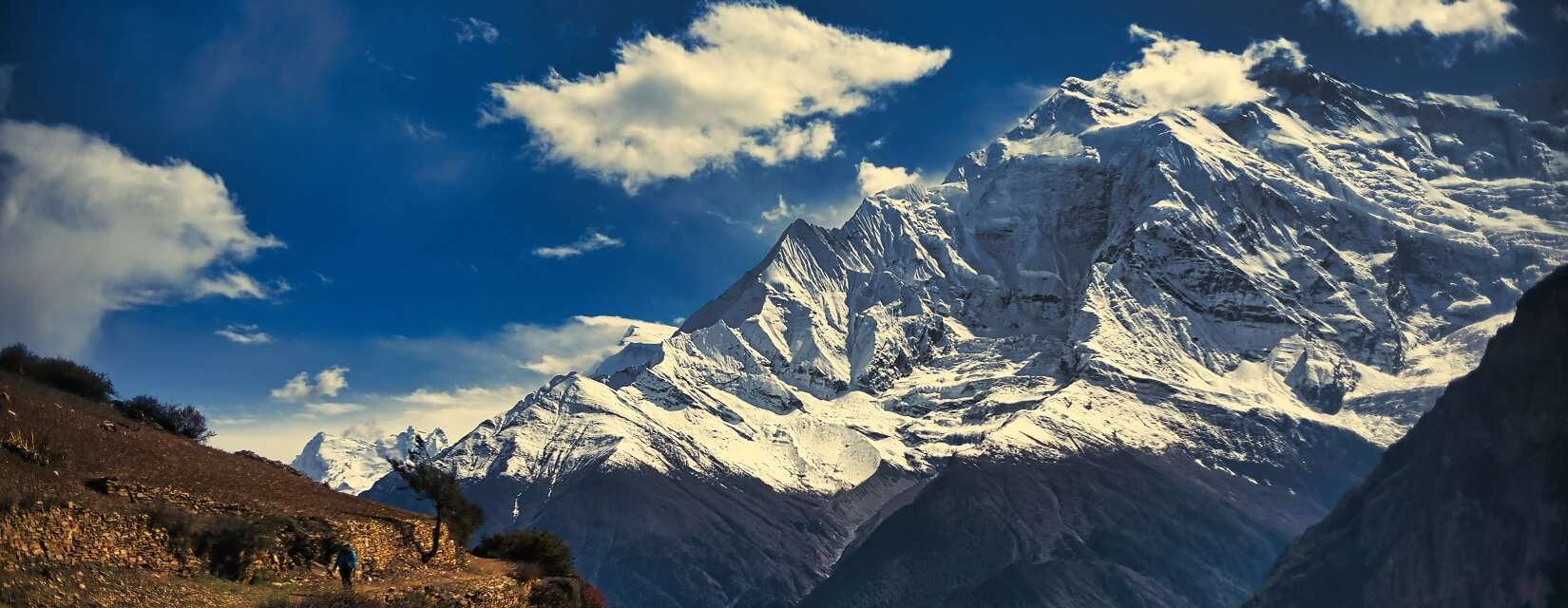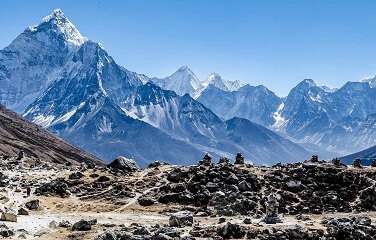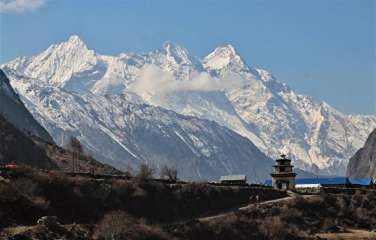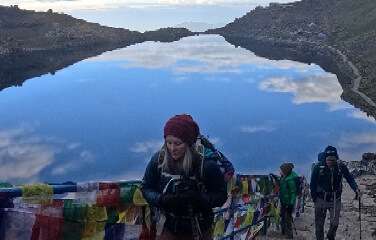What is the Annapurna Circuit in Nepal?

The Himalayas are traversed by the trek known as the Annapurna Circuit. The seven magnificent Annapurna mountains that you pass while hiking are what gave this trek its name. Although it takes three weeks to complete the trek, most people take 10 to 14 days. The Thorong La Pass is this hike's (literal) high point. You ascend more than 900 meters to this mountain pass, which is 5416 meters high, on the toughest day of the hike. The next day, you descend another 1600 meters before sleeping in a lower valley.
Pick the best time of year to hike the Annapurna Circuit
The months of October and November are the ideal times to hike the Annapurna Circuit. This is because there is less likelihood of rain or snow during this time and the weather is typically stable. Additionally, begin early to avoid the heat of the day.
Train at altitude (if possible)
Do some training hikes at high altitudes if at all possible. This will help you get mentally and physically ready for the added physical demands of high-altitude trekking. Naturally, not everybody is able to train at a high altitude. But if you can, we strongly advise it. Everyone can focus on their strength and cardio training before hiking the Annapurna Circuit.
Carry only what you need

Trekkers frequently make the error of packing extra items on their journeys. First-time hikers are most likely to experience this. You'll undoubtedly bring a few unnecessary items, though. On the other hand, trekkers are only required to bring the necessities. Things that aren't necessary have no place because they make your luggage heavier. You must not exceed the 15 kg of luggage per person limit, which includes your daypack. Don't overpack because you believe you'll need everything, as a result. because you don't frequently use them. Prior to packing, make a list, and then only pack your luggage. Take something off your luggage if it's on the list and you don't need it.
Acclimatize to Avoid Altitude Sickness
Prioritize proper acclimatization for a successful trek around the Annapurna Circuit. To acclimatize to higher altitudes and avoid altitude sickness, regular rest days are necessary. Drink plenty of water, refrain from alcohol, abstain from strenuous activity, and pay attention to your body's signals. Make the most of this amazing adventure while taking care of yourself. You will be led by Annapurna Circuit Essential Tips as you travel.
Hire Local Guides
Hiring a local guide will significantly improve your trek experience along the Annapurna Circuit. Local tour guides are highly knowledgeable about the area, culture, and trekking routes. Additionally, they can help you with navigation, offer insightful commentary, and guarantee your safety at all times.
Be prepared for all weather conditions

Be ready for rain, snow, and strong winds because the weather on the Annapurna Circuit is notoriously erratic. While trekking to a higher altitude, the weather is unpredictable. No matter when you decide to travel, it is critical to be ready for anything. Even though some times of the year have weather that is much more suited to trekking, you should still be ready. High in the Himalayas, the weather is unpredictable, and storms, snowfall, or rain can come at any time. Due to climate change and global warming, weather patterns have grown even more unpredictable in recent years. Even if you go on a walk in October, be prepared for snow or storms on the trail. Bring enough warm clothing, waterproof boots, and other essentials.
Don’t miss to side hike to Tilicho Lake

Numerous side hikes with breathtaking scenery are available on the Annapurna Circuit trek. Some of the many breathtaking side hikes are day hikes, while others are overnight hikes. Similar to Tilicho Lake Trek, the Annapurna Circuit trek with tilicho lake requires knowledge of a number of topics. Reaching Tilicho Lake, proudly referred to as "the highest elevation lake in the world," is a pleasant side trip that aids in acclimatization before crossing Thorong La Pass. Your itinerary for the Annapurna Circuit can include a luxurious overnight detour to Tilicho Lake. Due to poorly planned itineraries, some trekkers on the Annapurna Circuit pass up the chance to explore this magnificent Lake. Therefore, if you're doing a circuit trek to Annapurna, Lake Tilicho is a side trek that you must take. However, the Annapurna Circuit costs USD 1240 per person, and the price will change if you add a side trip that is not on the schedule.
Food and Accommodation
The Annapurna Circuit Trek is one of Nepal's most well-maintained trekking routes. Food and lodging are therefore not a big deal. You can easily find some food to eat and a place to rest. There are enough lodges and teahouses at each stop along the Annapurna Circuit Trek. Simple rooms with two beds, blankets, and pillows are available. Standard teahouses are also available at some stops. These lodgings range in price from $3 to $6. However, the cost rises when using the internet, hot showers, or charging. You can also eat food from regional cuisines like local, Indian, Chinese, and continental. The trekkers' favorite meal overall is dal bhat. In addition to these, meals are frequently served with pizza, noodles, burgers, pasta, and spaghetti. These meals cost between $1 and $5 USD. As you ascend further in your trek, the costs might rise.
Stay rehydrated
Because of the thinner, dryer air at higher altitudes, you lose a lot more body fluid. You breathe in and out more quickly as a result of the air's decreasing oxygen content. Additionally, when you breathe, you tend to lose more water. Additionally, you lose bodily fluid through sweat. Additionally, at high altitudes, you urinate more. As a result, you must regularly consume water to make up for the fluid your body is losing. As needed, consume 4-5 liters of water daily.
Good boots, Good backpack, Good Trek

Branded shoes and bags are always reliable. In addition, choosing the right size boots and bags is essential for higher altitude treks. Bring only the necessary equipment. Your feet will feel good in good boots. The proper boot size is crucial. Spending a significant sum of money on a pair of boots that you will wear for several hours is ideal. Additionally, wearing two pairs of supportive insoles would improve your feet's comfort and support. The weather can suddenly change at high elevations, and snow is possible. Waterproof boots come in handy in those situations.
Trek with professionals
High-altitude trekking is a skill that experienced guides have mastered over time. As a result, they are aware of the risks and how to manage them. The guides are knowledgeable and have a better grasp of the terrain. Professionals can give you a sense of security by helping you mentally prepare for difficult terrain and providing assistance.
Related packages
- Annapurna sanctuary trek
- Mardi Himal Trek
- Everest Base Camp Trek via Gokyo Lake
- Everest Three Passes Trek
- Manaslu Circuit Trek
- Langtang Valley Trek





